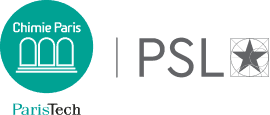A Franco-Australian Collaboration to Unlock the Secrets of Rock Art Pigments

As part of the TraceRockArt project supported by the DIM PAMIR, the Lab-BC at Chimie ParisTech-PSL is pleased to welcome Professor Rachel Popelka-Filcoff, visiting scholar and Rock Art Australia Minderoo Chair in Archaeological Science (University of Melbourne, Australia). This unique scientific collaboration aims to advance the understanding of the materials used in rock art through state-of-the-art, non-invasive analytical techniques.
Fostering International Synergy on Rock Art Research. The TraceRockArt project promotes a dynamic research partnership between France and Australia, also involving collaborators from Italy and Spain. On the French side, the collaboration brings together Ina Reiche (Lab-BC), Katharina Müller (IPANEMA), and Sebastian Schöder and Kadda Medjoubi (SOLEIL synchrotron). Together, the team is conducting joint experiments on the NANOSCOPIUM beamline at Synchrotron SOLEIL and co-organizing a scientific workshop at the C2RMF focused on cutting-edge, non-destructive analytical methods applied to ancient pigments.
Spotlight: Professor Rachel Popelka-Filcoff. Professor at the University of Melbourne, Rachel Popelka-Filcoff holds the Rock Art Australia Minderoo Chair in Archaeological Science in the School of Geography, Earth and Atmospheric Sciences. She leads the Archaeological Science Laboratory and spearheads multiple research initiatives in this field. Her research develops novel multidisciplinary approaches to analyzing cultural materials, artifacts, rock art, and landscapes. She focuses on high-resolution, non-invasive characterization methods, particularly for pigments and rock art, exploring the provenance and exchange of source materials using analytical and statistical techniques. Her work is supported by multiple Australian Research Council grants and proposals involving synchrotron and reactor-based research. Rachel holds a PhD in Chemistry from the University of Missouri (USA) as a National Science Foundation Research Fellow, and completed a postdoctoral fellowship at the National Institute of Standards and Technology (NIST, USA).From 2009 to 2020, she was based at Flinders University in Adelaide, including 2010–2016 as an AINSE Senior Research Fellow. She has delivered numerous keynote and invited talks, and her research has been widely featured in scientific and general media, as well as in radio and television interviews. Rachel serves on the editorial boards of the Journal of Archaeological Science and JAS: Reports, and was named a Fellow of the Royal Australian Chemical Institute in 2019.
Understanding Pigments to Preserve Our Shared Cultural Memory. Rock art pigments—often degraded over time—are fragile traces of early human symbolic behavior. Studying them requires analytical methods that are both sensitive and suitable for remote and delicate archaeological contexts. This project aims to develop robust, micro-scale characterization protocols that preserve the integrity of these ancient materials.
A Scientific Commitment to Safeguarding Global Heritage. By combining analytical and cultural approaches from multiple countries, this initiative contributes to a broader understanding of rock art—one of the most ancient and universal forms of human expression. In the face of climate change, human activity, and catastrophic events, the study of pigment traces is becoming increasingly critical to protect these vulnerable cultural sites from complete loss.
Download the full program of the scientific event held on July 7 at the C2RMF
Learn more about the TraceRockArt project – DIM PAMIR
